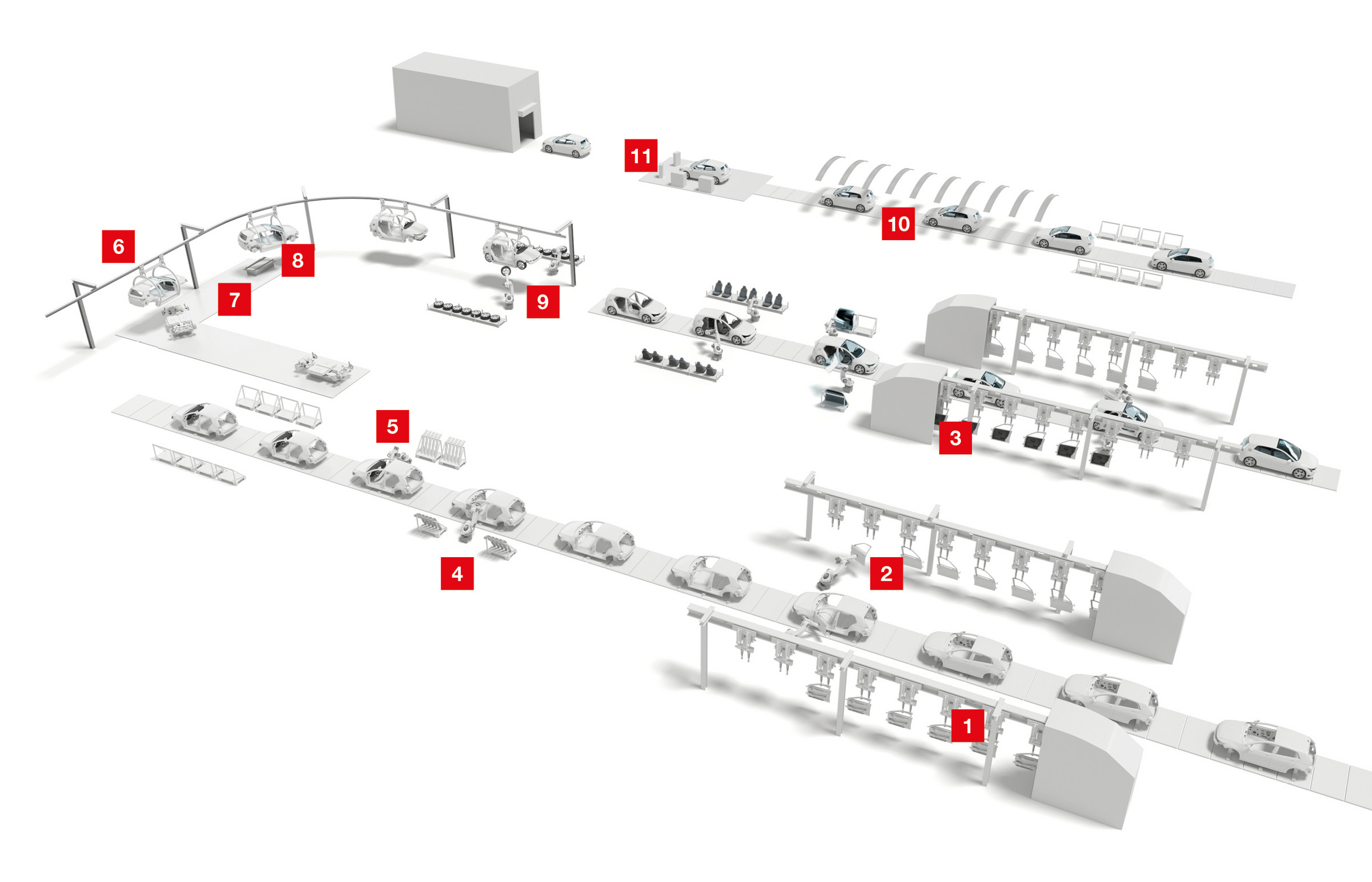The final assembly
Before the wedding is celebrated in automobile production, countless individual parts and elements must be assembled and processed to create partial and final products.
Assembly of the door modules with all of their attachment parts takes place on the door line. In the interior construction, arm-thick cables are laid, carpeting glued and the cockpit installed. Parallel to this, engine and transmission are joined to the chassis. And finally the wedding: The entire powertrain and the vehicle body are united forever. Further assembly steps for wheels, windows, seats and headlights follow. After filling with oil, fuel and water, it's on to the final inspection – the last station in the manufacturing process.
Position control is among the most important application areas for sensors in final assembly. Our wide range of optical distance sensors and bar code positioning systems supports the many different assembly steps. Our code readers for part identification and numerous solutions for type testing ensure the correct assignment of the assemblies to the vehicle.


















